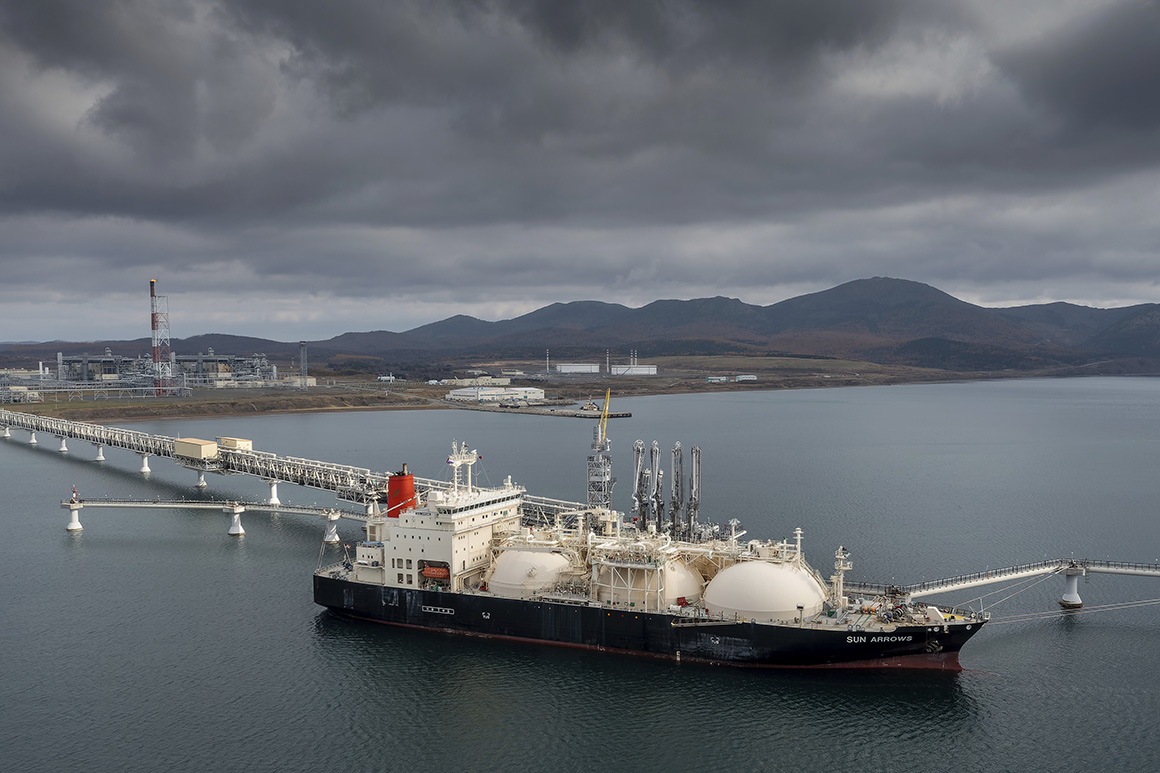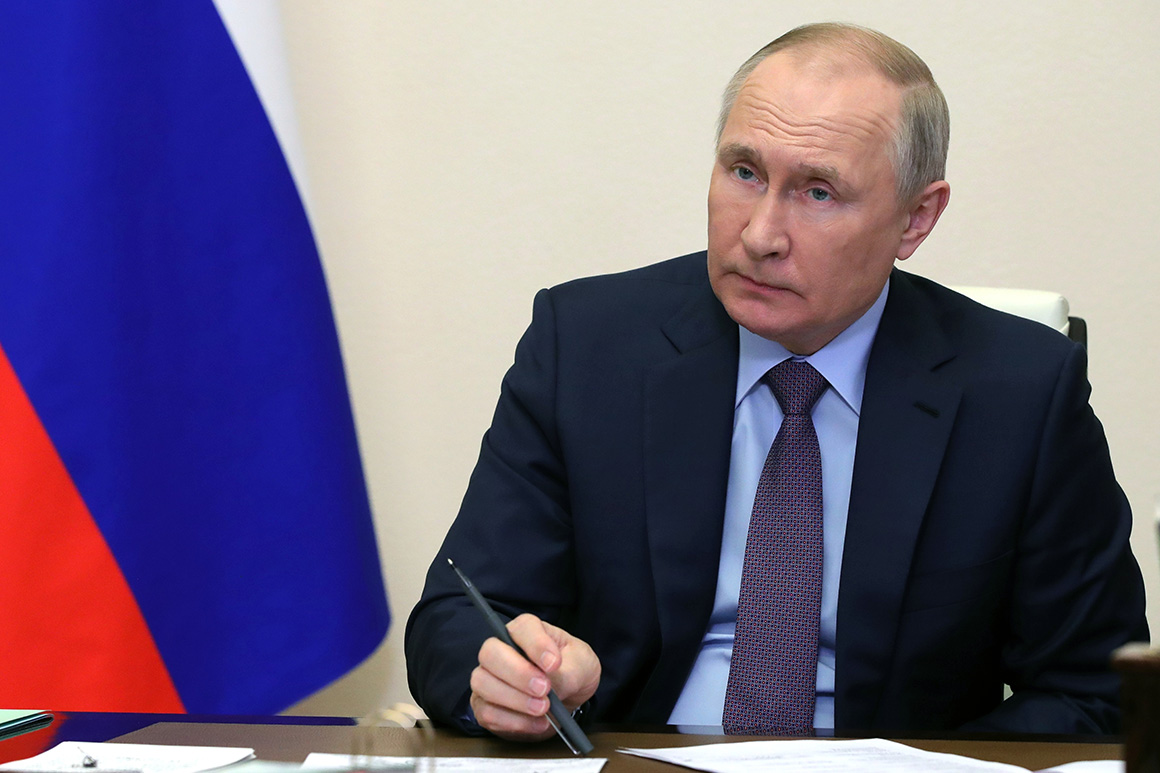
As the Russian naval cruiser Moskva was engulfed in flames on the Black Sea earlier this month, Vladimir Putin gathered with senior ministers to deal with a different unwelcome consequence of his war on Ukraine — one far less dramatic than the sinking of a flagship but more dangerous to the ultimate strength of his regime. The agenda for this meeting was to find solutions to what was euphemistically termed “the current situation in the oil and gas sector.” Looking tired and twitchy at times, Putin rattled off a list of problems plaguing Russia’s most strategically important industry. But the main challenge he was trying to address seemed like a new one for him: What does Russia do if the West stops buying its oil?
Putin appears to have been caught off guard by the recent shift in Western sentiment toward a Russian oil embargo, and perhaps with good reason. As recently as late February, when the first new round of sanctions was announced, the West made clear they did not apply to energy exports. But in the aftermath of Russian atrocities in Bucha and elsewhere, support has swelled for an embargo on Russian oil exports — the Kremlin’s single largest source of government funding. Since then, the U.S. and Canada have imposed a ban. EU policymakers have signaled some desire to follow suit, but they’ve struggled to agree on how to implement an embargo that avoids excessive self-harm. A ban could trigger an oil price shock that would plunge the world economy into recession, drive up global food costs and weaken unity among Ukraine’s allies.
In response to the embargo threat, Putin urgently tasked his ministers to come up with a plan by June 1 for building new oil export infrastructure to “friendly” countries. This demand had a whiff of desperation to it, since such infrastructure would take years to construct, and is thus of little use today. But in issuing his order, Putin unwittingly highlighted certain structural vulnerabilities in the Russian oil industry — weaknesses that hold the key to resolving the EU’s embargo dilemma.

When it comes to its oil exports to the West, Russia faces limits on its ability to redirect or reduce these volumes. These constraints arise from the sheer scale and inherent inflexibility in Russia’s system of production and transportation. Such limitations have been largely overlooked in recent sanction debates. But, if properly leveraged, they enable the West to design smart sanctions that could slash Russia’s oil revenues while also averting an oil price shock. What’s more, they could also fund reparations to Ukraine at Russia’s expense.
The first of these vulnerabilities is Russia’s limited ability to redirect its Western export volumes to other markets. A glance at the map reveals that Russia’s export infrastructure of pipelines, railways and sea terminals skews heavily to the West. This is not surprising, since Russia has been exporting oil to Europe since the 1870s. The West today is by far Russia’s largest customer, absorbing some 6 million barrels a day of Russian oil — over half Russia’s total output. By contrast, Russia’s export infrastructure to Asia is relatively modest. The first and only pipeline to China and the Pacific wasn’t completed until 2019 and carries less than 15 percent of Russia’s total output.
So, what would happen to those 6 million barrels a day if the West stopped buying? Russian officials have threatened to send it “elsewhere,” while the media have focused on stories of stepped-up sales to China and India. But this threat of a redirection to Asia is a paper tiger.
To begin with, Russia’s pipeline capacity to Asia is already full. This means the redirected oil would need to travel by sea from terminals on the Black Sea and the Baltic. To move that much oil over such a long distance would require some 230 supertankers — 30 percent of the global fleet — operating day in and day out. Such a massive seaborne flotilla (if it could even be chartered in the first place) would require a small army of third-party enablers: marine insurers, bankers, commodities traders, vessel owners, etc. Some of these third parties have already been avoiding the Russia oil trade, fearful of current sanctions. If the West imposes a full, coordinated embargo on Russian exports, including sanctions on third parties enabling the trade, most ships in the flotilla would never set sail. The sanctions risk would be too great. Instead, the volumes previously flowing West would end up “stranded” on Russian shores.
Which begs the question: What would Russia do with all that stranded oil? The answer highlights Russian oil’s second strategic vulnerability. Russia lacks large-scale storage capacity, so the only option would be to leave all this oil in the ground — that is, not to produce it in the first place. Known as “shutting in production,” this scenario would be severely damaging to Moscow for several reasons, some self-evident others less so.
Most obvious would be the loss of vital export revenues. Less evident, however, is the extensive damage a prolonged, large-scale shut-in could do to Russia’s upstream production capacity. Russia is not like Saudi Arabia, where advantageous geology and advanced infrastructure create immense swing capacity — the ability to vary production levels quickly and efficiently. Most Russian oil wells have meager flow rates and poor economics. A prolonged, large-scale shut-in would mean laboriously closing tens of thousands of these marginal wells, many of which could never return to profit. It could also compromise complex pressure maintenance programs critical to field profitability.
Restoring lost production capacity at marginal fields after a long shut-in would be a very slow and costly process — if it is possible at all. When Russia suffered a major drop in production in the early 1990s, it took over a decade, along with large amounts of Western capital and technology, to restore production to its previous levels.
Beyond operational consequences, there would be still other negative consequences of a shut-in. It would weaken support for Putin in Russia’s important oil producing regions. It would erode Russia’s standing in the OPEC+ cartel, and it would put Russia’s export market share at risk. Finally, it would deprive Putin of the key source of economic rents used to maintain his authoritarian rule.
With diversion to Asia a chimera and shutting-in a catastrophic risk, Russia turns out to be far more reliant on the West to absorb its oil than many Western policymakers may realize. And this dependency gives the West the leverage needed to impose smart oil sanctions that can achieve Western objectives while minimizing self-harm.
How would such sanctions work? Western governments would start by announcing a full embargo on all Russian oil exports. This should include secondary sanctions on third parties, thus stranding large amounts of export oil in Russia. But the embargo would include provisions that allow Russia to resume exporting its stranded oil, provided it sells through a special Western-administered sanctions regime that severely limits the proceeds sent back to the Kremlin.
Under this regime, Russian producers would sell their exported oil at normal market prices. But they wouldn’t receive the full market price for the sale. Instead, the sanctions administrator would pay them a reduced price only sufficient to cover their production costs, excluding any amounts for Russian taxes. In Russia, average production costs run around $20 a barrel, before taxes. The difference between this $20 of “cost-only” proceeds and the actual market price would go into a special fund for Ukraine reparations.
For example, if oil is selling at $80 a barrel, the Russian seller would get a “cost-only” payment of $20, while the remaining $60 would go to fund Ukraine reparations. Compare that to what currently happens: The Russian seller gets the full $80 a barrel, $55 of which gets passed on to the Russian government as taxes. In effect, the cost Russia must pay to avoid a painful shut-in is to surrender all its oil profits (including taxes) to rebuild Ukraine.
Kremlin revenues slashed, a supply shock averted and a half-billion dollars a day for Ukraine reparations — there must be a catch. The catch is that Russia can’t be forced to export its stranded oil. Selling would clearly be in Russia’s economic self-interest: It receives just enough to keep its most strategic industry afloat while avoiding a crippling shut-in. But it wouldn’t be at all surprising if Russia opted — at least initially — to shut in production in hopes of roiling global markets and breaking Western resolve. The Kremlin could also pursue sanctions of its own; in fact, the EU is already hard at work trying to prepare for the possibility of restricted gas exports to Europe.
But the longer Russia chose to shut in its oil, the more severe the consequences, both economically and geologically. Putin has already lost one flagship in this war. He may think twice before scuttling his most strategic industry.
----------------------------------------
By: Craig Kennedy
Title: Opinion | How to Sanction Russian Oil Without Hurting the West
Sourced From: www.politico.com/news/magazine/2022/04/26/sanction-russian-oil-without-hurting-west-00027478
Published Date: Tue, 26 Apr 2022 03:30:00 EST






